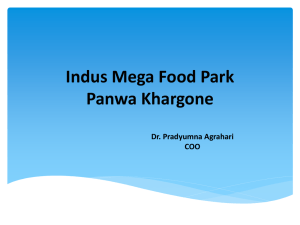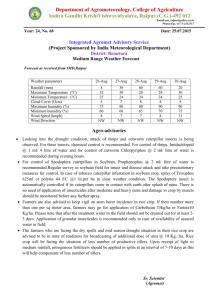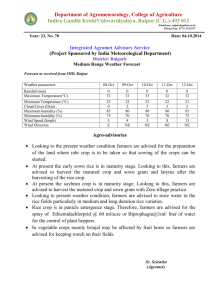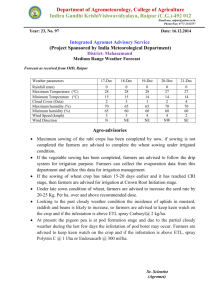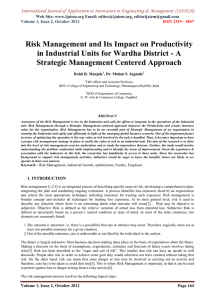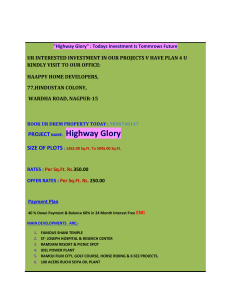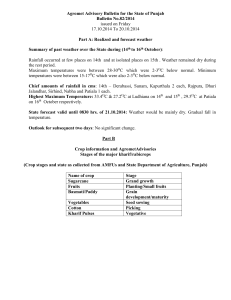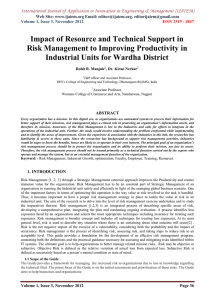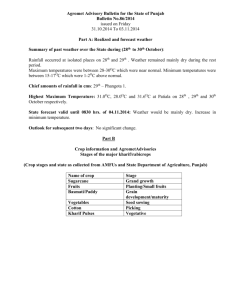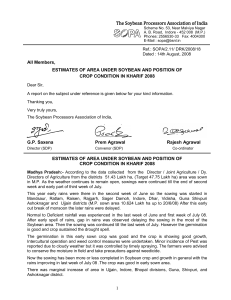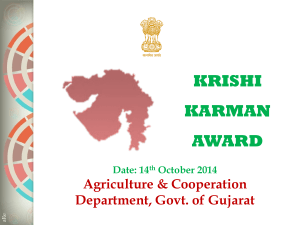19-21 August 2014(By Shri Karanjit Singh Ngangbam,Wardha and
advertisement
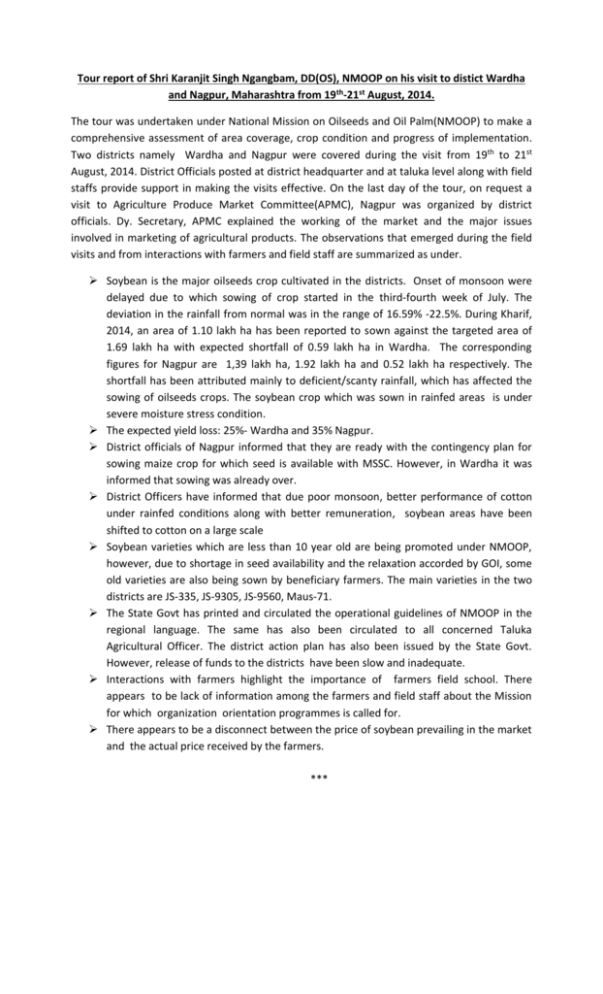
Tour report of Shri Karanjit Singh Ngangbam, DD(OS), NMOOP on his visit to distict Wardha and Nagpur, Maharashtra from 19th-21st August, 2014. The tour was undertaken under National Mission on Oilseeds and Oil Palm(NMOOP) to make a comprehensive assessment of area coverage, crop condition and progress of implementation. Two districts namely Wardha and Nagpur were covered during the visit from 19th to 21st August, 2014. District Officials posted at district headquarter and at taluka level along with field staffs provide support in making the visits effective. On the last day of the tour, on request a visit to Agriculture Produce Market Committee(APMC), Nagpur was organized by district officials. Dy. Secretary, APMC explained the working of the market and the major issues involved in marketing of agricultural products. The observations that emerged during the field visits and from interactions with farmers and field staff are summarized as under. Soybean is the major oilseeds crop cultivated in the districts. Onset of monsoon were delayed due to which sowing of crop started in the third-fourth week of July. The deviation in the rainfall from normal was in the range of 16.59% -22.5%. During Kharif, 2014, an area of 1.10 lakh ha has been reported to sown against the targeted area of 1.69 lakh ha with expected shortfall of 0.59 lakh ha in Wardha. The corresponding figures for Nagpur are 1,39 lakh ha, 1.92 lakh ha and 0.52 lakh ha respectively. The shortfall has been attributed mainly to deficient/scanty rainfall, which has affected the sowing of oilseeds crops. The soybean crop which was sown in rainfed areas is under severe moisture stress condition. The expected yield loss: 25%- Wardha and 35% Nagpur. District officials of Nagpur informed that they are ready with the contingency plan for sowing maize crop for which seed is available with MSSC. However, in Wardha it was informed that sowing was already over. District Officers have informed that due poor monsoon, better performance of cotton under rainfed conditions along with better remuneration, soybean areas have been shifted to cotton on a large scale Soybean varieties which are less than 10 year old are being promoted under NMOOP, however, due to shortage in seed availability and the relaxation accorded by GOI, some old varieties are also being sown by beneficiary farmers. The main varieties in the two districts are JS-335, JS-9305, JS-9560, Maus-71. The State Govt has printed and circulated the operational guidelines of NMOOP in the regional language. The same has also been circulated to all concerned Taluka Agricultural Officer. The district action plan has also been issued by the State Govt. However, release of funds to the districts have been slow and inadequate. Interactions with farmers highlight the importance of farmers field school. There appears to be lack of information among the farmers and field staff about the Mission for which organization orientation programmes is called for. There appears to be a disconnect between the price of soybean prevailing in the market and the actual price received by the farmers. *** The groundnut crop, which has not received rainfall after first week of June, is under severe moisture stress and possibility of recovery of groundnut crop along with intercropped redgram is very difficult, even after receipt of rains hereafter..
